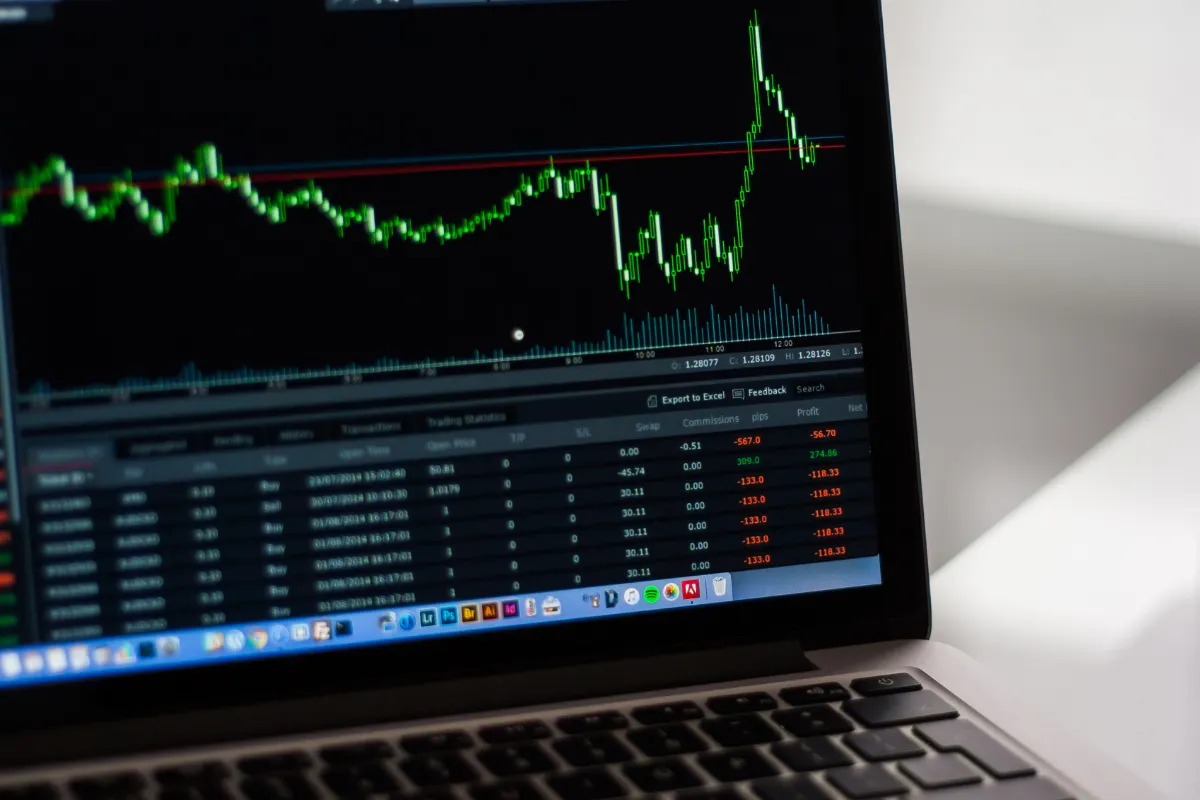The scope and complexity of a software project are among the most significant factors determining its cost. A project with a larger scope and more complex requirements will naturally require more time, resources, and expertise to complete, resulting in higher development costs.
According to Markets and Markets, the digital transformation market is expected to grow at a Compound Annual Growth Rate (CAGR) of 24.1%, from $695.5 billion in 2021 to $3,144 billion by 2030. This rapid growth highlights the increasing demand for software solutions across various industries as businesses seek to leverage technology to improve efficiency, productivity, and customer experience.
In this article, we will explore the key elements that influence software development costs and provide insights into how to manage them effectively.

Average Price Myth
One of the most common misconceptions in software development is the idea of an "average" price.
When browsing online, you may come across software development projects ranging from a few tens of thousands of dollars to several hundred thousand dollars. This wide disparity in prices begs the question: what determines the cost estimate of a software project?
The truth is that there is no one-size-fits-all answer to this question. A multitude of factors, each of which can have a significant impact on the final price tag influences the cost of a software project. Attempting to rely on an "average" price can lead to unrealistic expectations and budgetary misalignments.
When we talk with our teams, they all agree that the accuracy of every estimate heavily depends on the level of detail in every development plan. In essence, to accurately estimate the cost of a software project, a thorough project analysis is essential. This analysis should take into account various factors such as the project scope, complexity, technology stack, development methodology, team size, and geographic location of the development team.

For example, a project requiring custom development from scratch will likely be more expensive than one that can leverage off-the-shelf solutions or pre-built templates. Similarly, a project involving complex integrations with third-party systems or requiring specialized expertise may command a higher price than a simpler, standalone application.
Our teams at Softjourn have extensive experience in software development and have identified the biggest cost drivers for software projects. To help businesses navigate the complexities of software development pricing, we have created a comprehensive guide that outlines these cost drivers and provides strategies for managing them effectively.
In the following sections, we will dive into each of these cost drivers, exploring how they impact software development prices and offering insights into how to optimize costs without compromising on quality or functionality.
Steps in Decoding the Cost of Software Development
By following these steps, software development companies can systematically decode a project's cost, provide accurate estimates to clients, and ensure effective cost management throughout the development lifecycle. Our teams at Softjourn focus on breaking down features into smaller projects and ensuring that every detail is analyzed and covered in the offer.
It's important to note that the specific steps and techniques may vary based on the company's processes, project characteristics, and client requirements. Here at Softjourn, our SMEs are actively participating in the creation of project estimates, and they use their rich experience to ensure that every estimate is realistic and focused on the client's needs.
Here are the steps that we believe significantly help when determining the overall cost of any software development project:
- Step 1 - Project Type
- Step 2 - Project’s Scope and Complexity
- Step 3 - Development Team and Tech Expertise
- Step 4 - QA and Product Maintenance
- Step 5 - Step 5 - Tech Stack and Frameworks
- Step 6 - Testing and Maintenance of Software Development
Step 1 - Project Type
The price of software development can be influenced by various factors, including project type. Here are some common types of software development projects and how they may impact pricing:
- Complexity of features and functionalities
- Technology stack (e.g., front-end, back-end, database)
- Integration with third-party services or APIs
- Responsiveness and cross-browser compatibility
Mobile Application Development:
- Platform (iOS, Android, or cross-platform)
- Native or hybrid development approach
- Complexity of features and user interface
- Integration with device-specific functionalities (e.g., camera, GPS)
Desktop Application Development:
- Operating system (Windows, macOS, Linux)
- Complexity of features and user interface
- Integration with hardware components or peripherals
- Deployment and distribution requirements
Enterprise Software Development:
- Scale and complexity of the system
- Integration with existing systems and databases
- Security and access control requirements
- Customization and configuration options
Software as a Service (SaaS) Development:
- Multi-tenancy architecture
- Scalability and performance requirements
- Subscription-based pricing model
- Regular updates and maintenance

The price of software development projects can also be influenced by factors such as the size of the development team, project duration, level of customization required, and the expertise of the developers involved. Additionally, the development methodology (e.g., Agile, Waterfall) and the client's specific requirements and constraints will have an impact on the overall cost of the project.
It's important to note that the pricing for each type of project can vary significantly based on the specific requirements and the development company or freelancers involved. Thorough requirements gathering, project scoping, and estimation are crucial to determining an accurate pricing for a software development project.
Step 2 - Discuss Project Scope and Complexity
The scope and complexity of a software project are critical factors that directly influence development costs.
A well-defined scope helps establish clear boundaries and requirements for the project, while complexity refers to the intricacy and difficulty of the tasks involved. Let's dive deeper into how these factors impact costs.
Application Features and Functionality
The features and functionality included in a software project are the core elements that define its scope. Each feature requires careful planning, design, development, and testing, which translates into time and effort invested by the development team. The more features and complex functionalities a project has, the higher the development costs will be.
Consider a basic mobile app with a few core features compared to a comprehensive enterprise software solution with multiple modules, integrations, and advanced features. The latter will inherently require more development hours, specialized skills, and resources, resulting in higher costs.
When defining the project scope, we advise to prioritize features based on their value and importance to the end users. The Minimum Viable Product (MVP) approach, which focuses on developing the core features first and iteratively adding enhancements, can help manage costs and reduce the risk of overinvesting in unnecessary features.

To effectively manage feature-related costs, consider the following:
- Conduct thorough requirements gathering and analysis to identify essential features through the Discovery Phase
- Prioritize features based on their value and impact on the user experience
- Break down complex features into smaller, manageable components
- Regularly review and adjust the feature list based on user feedback and business goals
- Implement a change management process to control scope creep and manage feature additions or modifications
Step 3 - The Need for Integrations and Third-Party Services
Integrating a software application with other systems, APIs, or third-party services can significantly affect development costs. Integrations require additional effort to ensure seamless communication and data exchange between the systems. The complexity of the integrations, the number of systems involved, and the compatibility of the technologies used all contribute to the overall cost.
Each integration point requires careful design, development, and testing to ensure seamless communication and data flow between the systems.
The complexity of integrations can vary based on factors such as:
- The number of systems or services being integrated
- The compatibility and interoperability of the technologies involved
- The data formats, protocols, and security requirements of the integrated systems
- The availability and quality of documentation and support for the third-party services
- Integrating with well-established and well-documented services or APIs can be relatively straightforward while integrating with legacy systems or poorly documented services can be more time-consuming and costly.
Types of Data Models Used and Database Design
The complexity of the data models and database design used in a software project can significantly impact development costs. Well-designed data models and database schemas are essential for efficient data storage, retrieval, and management.
Complex data structures, specific relationships, and constraints often require more development effort to design, implement, and optimize.
Consider a simple application with a few basic data entities compared to a data-intensive application with numerous interconnected entities, complex relationships, and large volumes of data. The latter will require more time and expertise to design and develop an efficient and scalable database solution.
To manage data model and database design-related costs, consider the following:
- Data analysis and modeling to identify the most suitable data structures and relationships
- Normalize the database design to minimize data redundancy and improve data integrity
- Optimize database queries and indexes for performance and scalability
- Consider using Object-Relational Mapping (ORM) tools or frameworks to simplify database interactions and reduce development effort
Striking the right balance between scope, complexity, and cost is crucial for the success of any software development project.
Step 4 - The Right Development Team and Technical Expertise Your Project Needs
The expertise and composition of the development team play a crucial role in determining software development costs. The skills, experience, and location of the developers can greatly influence the project budget.
In-House vs. Outsourcing
The decision to develop software in-house or outsource it to an external team has significant cost implications.
In-house development provides greater control and direct communication but requires investing in a dedicated team, infrastructure, and ongoing expenses.
Outsourcing, on the other hand, allows access to a wider pool of talent and can be more cost-effective, especially for short-term projects or when specific expertise is required.
Developer rates vary widely based on factors like location, experience and skill set. Hiring developers in regions with higher living costs, such as North America or Western Europe, often comes with higher rates compared to regions like Eastern Europe, Asia, or Latin America.
However, we advise our clients to consider factors beyond just cost, such as the quality of work, communication skills, and cultural fit when selecting a development team.
Hybrid Development Teams
Hybrid development teams combine elements of both in-house and outsourced teams. This approach involves having a core in-house team that collaborates with external developers or specialists. Hybrid teams offer the benefits of:
- Maintaining control and alignment with the in-house team
- Accessing specialized skills and expertise from external resources
- Balancing the costs and flexibility of in-house and outsourced teams
- Facilitating knowledge transfer and learning between in-house and external team members
Developer Expertise and Domain Specialization
Regardless of the type of development team, the expertise and specialization of individual developers significantly impact the quality and efficiency of the software project.
Some key areas of expertise to consider include:
- Domain knowledge: Understanding of the business domain and industry-specific requirements.
- Software architecture and design: Ability to create scalable and maintainable software structures.
- Database design and optimization: Expertise in designing efficient and performant database solutions.
- Front-end development: Skills in creating intuitive and responsive user interfaces.
- Backend development: Proficiency in server-side programming and API development.
- DevOps and infrastructure: Knowledge of deployment, automation, and infrastructure management.
- Quality assurance and testing: Expertise in designing and executing comprehensive testing strategies.
When assembling a development team, it's important to ensure a balanced mix of skills and experience aligned with the project requirements.

Here’s what we at Softjourn always consider before building a new team for our clients:
- We use skill assessments and interviews to evaluate the expertise of potential team members
- Our teams foster a culture of continuous learning and knowledge sharing within the team
- Our teams encourage specialization and the development of domain-specific expertise
- We provide opportunities for training and professional development to keep skills up-to-date
- We always promote collaboration and cross-functional teamwork
By carefully considering the type of development team and the expertise of its members, organizations can make informed decisions about how to structure and invest in their software development capabilities.
Softjourn helps companies find an ideal team to support their product and gather a team that will work together to deliver the best product.
The right combination of in-house, outsourced, or hybrid teams, along with the appropriate skills and specialization, can significantly impact the cost, quality, and success of the software project.
Team Size and Scalability
Development team size is another important factor affecting software development costs. The optimal team size depends on various factors, such as the project scope, complexity, timeline, and budget.
A larger team may be necessary for complex projects with tight deadlines, while a smaller team may suffice for simpler projects or those with more flexible timelines.
When considering team size, it's important to strike a balance between having enough resources to complete the project efficiently and avoiding over-allocation or underutilization of team members. Some key considerations include:
- Consider the interdependencies and collaboration needs among team members
- Plan for scalability, allowing the team to adapt to changing project demands or unexpected challenges
- Allocate resources efficiently, ensuring that team members have a balanced workload and can focus on their core expertise
- Regularly review and adjust the team size and composition based on project progress and changing requirements
- Effective team sizing and scalability planning can help optimize resource allocation, minimize idle time, and ensure that the development team can deliver the project within the desired timeline and budget.
We always prioritize offering clients a balance between cost, access to highly expert domain-focused developers, and agile team dynamics, aligning them with the overall project objectives and business goals.
Step 5 - Tech Stack and Frameworks
The selection of programming languages and frameworks for a software project can influence development costs.
Some languages and frameworks have steeper learning curves or smaller talent pools, which can increase development time and costs. Popular and mature technologies often have larger communities, more resources, and a wider range of available developers, which can help reduce costs.
For example, choosing a popular and mature language like Java or Python can provide access to a large pool of skilled developers, extensive libraries, and community support. This can help reduce development time and costs compared to using a less common or niche language.
Similarly, frameworks like Ruby on Rails, Django, or Angular provide pre-built components, tools, and conventions that can accelerate development and reduce the amount of boilerplate code required. When selecting programming languages and frameworks, we would advise you to consider the following factors:
- Alignment with project requirements and performance needs
- Availability of skilled developers and their associated costs
- Maturity and stability of the language or framework
- Community support, documentation, and ecosystem
- Compatibility with existing systems and infrastructure
- Long-term maintainability and scalability
Choosing the right combination of languages and frameworks that balance cost, performance, and maintainability can help optimize development costs while ensuring the longevity and success of the software project.
Cloud Infrastructure and Scalability

Designing and implementing a scalable and reliable cloud infrastructure is crucial for modern software applications.
The choice of cloud provider, the architecture design, and the scaling requirements all contribute to development costs. Properly architecting the application for scalability and performance can help optimize costs in the long run but may require additional development efforts upfront.
By implementing CI/CD pipelines, DevOps enables frequent and automated builds, testing, and deployments. This reduces the manual effort required for these tasks and helps catch issues early in the development process. Automated testing and deployment also reduce the risk of human errors and ensure consistent and reliable releases.
DevOps practices, such as infrastructure as code (IaC) and containerization, enable the provisioning and management of infrastructure through code. This allows for version control, reproducibility, and scalability of the infrastructure, reducing the time and effort required for manual setup and configuration.
Adopting DevOps practices can lead to several cost-saving benefits:
- Faster time-to-market through streamlined development and deployment processes
- Reduced manual effort and errors through automation
- Improved collaboration and communication between development and operations teams
- Increased efficiency and resource utilization through continuous optimization
- Enhanced scalability and flexibility through infrastructure as code and containerization
Here at Softjourn, we always advise organizations to consider the upfront costs and long-term benefits when adopting a DevOps approach. Today, when we gradually introduce DevOps practices and continuously measure and optimize these processes, we can help our clients maximize the cost-saving potential while using the cloud.
Step 6 - Testing and Maintenance of Software Development
Testing and quality assurance are critical components of software development that can significantly impact costs. Thorough testing and quality assurance help identify and fix defects early, preventing costly rework and ensuring a high-quality final product. The choice between manual and automated testing approaches comes with cost implications:
- Manual testing requires human testers to perform test cases and report issues, which can be time-consuming and labor-intensive.
- Automated testing involves writing test scripts that can be run repeatedly, reducing the time and effort required for testing. However, automated testing requires an initial investment in setting up the test infrastructure and writing test scripts.
Allocating sufficient time and resources for bug fixing during development can help minimize the impact of defects on the final product.
Additionally, planning for ongoing maintenance, updates, and support after the initial release is crucial for ensuring the long-term success and overall cost-effectiveness of the software product.
Conclusion
Software development costs are influenced by a multitude of factors, ranging from project scope and complexity to the expertise of the development team, technology choices, project management, and testing. Understanding and carefully considering these factors is essential for businesses to make informed decisions and allocate their budgets effectively.
By clearly defining project requirements, selecting the right development team, choosing appropriate technologies, adopting effective project management practices, and investing in thorough testing and maintenance, organizations can optimize their software development costs and ensure the successful delivery of high-quality software solutions.
Effective cost management in software development requires a holistic approach that considers all the factors. We support our clients in carefully planning, monitoring, and adjusting these elements throughout the development lifecycle, businesses can strike the right balance between cost, quality, and time-to-market, ultimately achieving their software development goals in a cost-effective manner.
If you have a project ready, we are here to help. Contact us!













